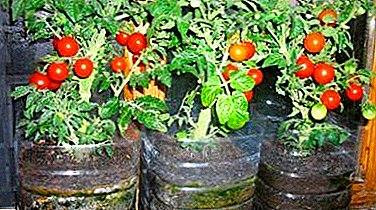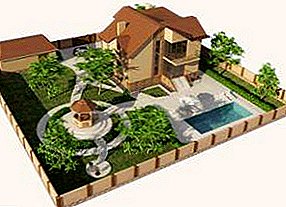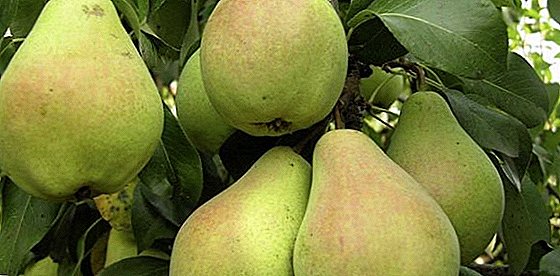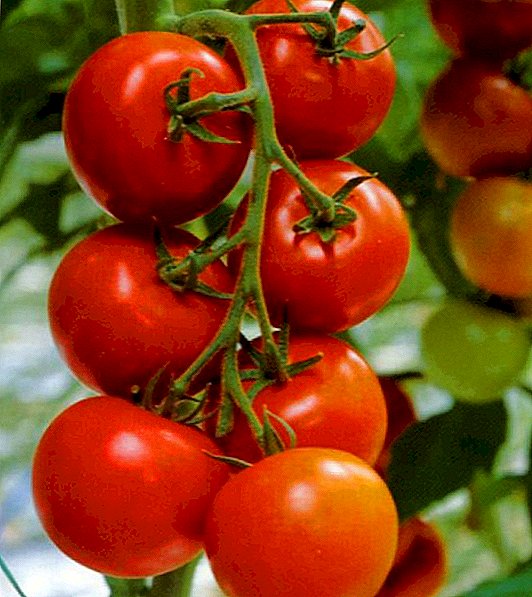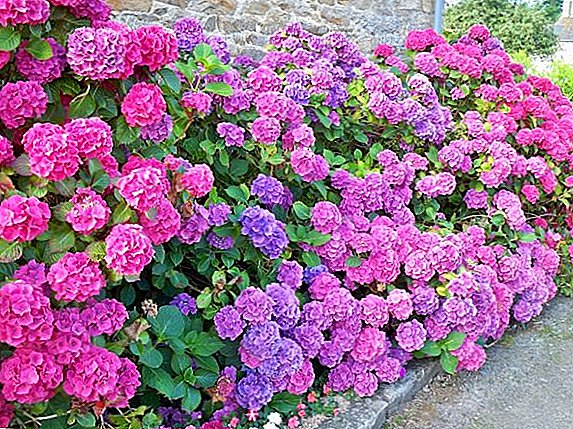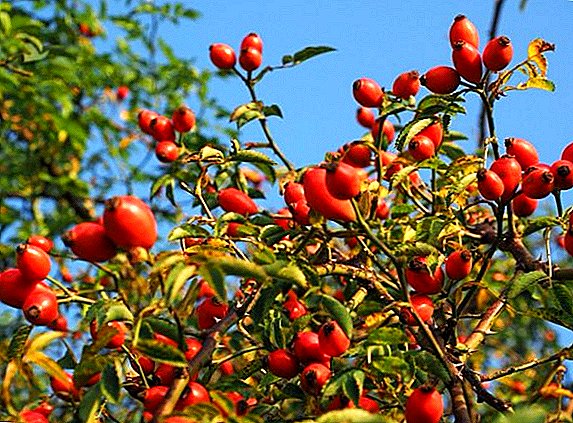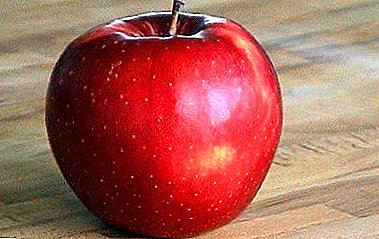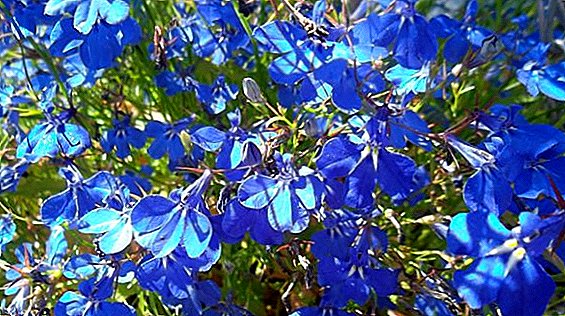
Like any garden tree, plum has its own time and requirements for planting.
It is very important to take them into account, because the slightest error can deprive you of both the tree itself and the long-awaited harvest.
In this article we describe all the features and schemes of plum planting, tell you how to choose the right place for it and care for it throughout the entire growth period.
Preparing for landing: what to consider?
Garden trees are mainly derived by breeding methods, as a result of crossing different varieties. On this depends not only the taste of the fruit, but also which region is best suited to the tree, what is its size, resistance to frost and various pests.
Therefore, the most important stage of preparation is study of all sorts of plums, the choice of those that you liked the most and are suitable for your climate region.
Choosing the right place for plums

The second stage of preparation for plum planting is the selection of a suitable place for its growth. In particular, should consider the degree of lightWhether other trees or buildings will not shade a tree.
Even when laying a garden, it is important to take into account the distance between the trees and be aware of how large it can grow. If the plum falls into the shade, it will grow worse, its leaves may turn yellow. Also, very strong shading can cause deterioration in crop quality and fruit size.
Also, plums do not like winds, because they simply can blow their flowering and deprive you of the harvest. Therefore, the relief of the terrain on which you are going to plant a plum should be broadly wavy and have gentle slopes.
Due to this, good air drainage will be provided for wood - cold air will not be suitable for it, and it will not accumulate in one place. That area, where there are a lot of pits and yars, will not work.
We select the soil
The best soil for plums loess loam and sandy loam are. It is very good if under these types of soil there are drained loams or layered sediments with a large amount of sandy loam in them.
Plum has a fairly large root system, which in no case should not be washed away by groundwater, although the plum is a very moisture-loving tree.
In this way, the optimum level of groundwater is 1.5 -2 meters. If they are higher - the best option are special drainage grooves that are dug near the garden. They will drain all unnecessary excess water.
You should not even think about planting plums on peat-marshy soils, as well as where sands or clay-and-sandy moraine lie at a depth of less than a meter
It is also important to know that after unrooting plum garden stands wait at least 4-5 years before laying a new one in the same place. After all, the previous trees have already pulled all the most necessary material out of the soil, so it will be difficult for a young tree to take root in the same place.
Rules for preparing the soil for planting seedlings
Before planting a plum garden, the soil is very well dug up so that it soaks with enough air.
It is recommended to apply various organic and mineral fertilizers to low fertility soils, which will increase its fertility. The main thing is that the preparation should be carried out in advance, in 2-3 years after the laying of the plum orchard.
Up to this point, large trees should not grow on the site, after which there will be little nutrients left for plums.
Planting plum seedlings
Most plums are medium to tall trees that occupy a lot of garden space. Therefore, take account of you need not only where to plant the tree, but also how far to retreat from other garden pets.
Layout of the plum garden
The distance between the plums should be such that they do not obscure each other and practically do not reach with branches one tree another. This will not only allow them to get a lot of sunlight, but will not complicate the movement in the garden and the harvest.

So, if the plums are sredneroslye, then the distance between the trees of one row should be at least 2 meters. If the trees are vigorous, then it should be increased to 3 meters. Row spacing between medium drains must be at least 4 meters, and for vigorous, this distance increases to 4.5 meters.
The most important thing to remember when laying a garden is that with a large number of trees in your area you will not achieve abundant crops, even if you regularly fertilize the soil. After all, trees need not only nutrients and sunlight, but also space for their root system.
Terms of plum planting
More often Plum is planted in spring. In more northern regions, autumn will do. However, in the fall there is a big risk that the young tree will not have time to get accustomed to the new soil and for this reason it will simply freeze in winter.
Spring planting is carried out already on the 5th day after the soil for plum planting is completely thawed from frost. The deadline for landing is not very long, only 10-15 days.
If you plant a tree later, it may get worse or be damaged by high temperatures and oversaturation of moisture. Also, if the sapling is transplanted at a later date, it will have time to bloom in the same place of growth and will not take root in such a state on the new one.
Preparing a pit for planting

Pit is dug prematurely 2-3 weeks before landing. This is done in order to pre-load a mixture of organic fertilizers and fertile soil at its bottom and to allow it to settle before the time of direct planting of the seedling.
For the same reason, the pit should be deep enough, about 60 centimeters. Its diameter should be the same.
When you dig a hole, it is recommended to immediately dig a stake into it, to which you will later tie a seedling. It should be borne in mind that the distance between it and the tree should be at least 15 cm. The count should be located to the north of the seedling.
Basic requirements for direct landing
When starting planting a seedling, it is important to consider the following very important requirements:
- The root neck of the tree must necessarily remain above the soil surface by about 2-5 centimeters. Later, with the subsidence of the soil, it will sink a little more on its own. However, it is not necessary to overdo it with raising the seedling above the surface of the soil, as there is a risk of leaching and drying of the roots.
- Bury the seedling only with soil, without admixture of various fertilizers. Having filled up the seedling, it is necessary to ram the ground around it very well so that there is no air near the roots (it can cause the drying of the horse system).
- From the soil, which was dug out from the very bottom of the pit, a small mound is made around the tree, which will contribute to the excellent water absorption by the seedling.
Departure after landing
So immediately after you planted seedling, him it is necessary to water. However, even if the soil is wet after the snow melt, watering should be mandatory, only the use of less water is possible.
The required amount of water per tree should be at least 3 buckets. Since the plum loves moisture, after 2 weeks watering can be repeated. Also, the soil around the trunk should be mulched peat or humus, which will contribute to a longer moisture retention.
It is also interesting to read about the care and planting of self-fruited varieties of plums.
Main rules of plum care
The plum tree and the garden as a whole do not require much attention and care when compared to other fruit trees. But nevertheless, in order to get regular and abundant crops, it is worthwhile not only to fertilize the tree, but also to build the correct scheme for protecting the tree from various pests.
How to prevent the defeat of plum diseases and pests in time?
First of all, you need to find out to which diseases the variety that you planted on your plot is the least resistant and which pests can harm it. In the process of dew tree stands conduct periodic garden inspections, considering exactly which pests appear on your trees.

The simplest and very reliable means of struggle with pests and fungal diseases is pruning and burning damaged branches. Burn also need all fallen from the plum leaves and damaged fruit. In the spring, before the onset of consistently high temperatures (up to 10 degrees Celsius), insects that are trying to settle down on the plum should simply be shaken off and destroyed.
Of course, a more effective means of preventing various diseases and tree damage by pests are treatments with the help of chemicals.
If your tree was struck by a scythe or a false guard, before the tree's buds swell and before the air temperature rises to + 5 ° C, the tree should be treated with nitrophene, with a concentration of 3%. Thus, you can still kill ticks and aphids, which are still in a sleeping winter state.
In the springwhen the plum is full, its process bordeaux acid 1% concentration. Bordeaux acid can be replaced with 4% polycarbocin concentration. In the case of the latter, spraying should be repeated even after plum flowering.
To combat the caterpillars that infect plum leaves, after the flowering period, the tree is treated with such drugs as dendrobatsilin, entobakterin (1% concentration). It should be borne in mind that the processing of plums with these preparations should be carried out at a temperature not lower than 15ºС.
Against aphids are struggling with a drug like karbofos. Its concentration during processing should be no more than 0.2%.
To combat the plum moth First, you need to hang a pheromone trap on the tree. If you notice that a moth butterfly has fallen into it, then you need to hang up pheromone rings all over the tree. Also, plum is treated with 0.2% karbofos.
Cropping and crown formation
When buying a seedling, all its shoots are usually very different from each other: some can be very developed and distill the main conductor in growth, others, on the contrary, only 10 centimeters away from the trunk.
Also, a lot of absolutely unnecessary branches can grow on a young plum tree, which only interfere with each other and shade their own fruits. In order for the plum to be beautiful, good fruit bearing and not create difficulties when picking the fruit, it is very important form regularly her crown.
The first pruning pruning is carried out directly after planting the seedling at a permanent place of growth. In this case, the branches are not just shortened, it is important to choose the most even and durable of them, forming several tiers of them, 4-6 branches in each
In addition, it is necessary to choose the main conductor and cut it so that it remains longer than all the other branches. Each subsequent tier that goes below the conductor should be shorter than the one that goes below it. I.e, the longest branches should be on the lowest tier.
When choosing the branches that you want to leave for growth, please note that they must move away from the main trunk at an angle of not less than 40 degrees, otherwise they will break off from the crops.
The distance between the tiers should be approximately 40-60 centimeters., depending on the height of the tree itself. Also, the number of branches with each subsequent tier, starting from the bottom, should decrease.
Subsequent pruning will be designed to maintain the shape of the crown and remove competitors from the main conductor and main branches.
Also, it is important to apply a differentiated system to the plum tree, cutting the branches of the tree with a strong budding of the buds by only a quarter, if it is average - the annual branches are cut to one third of their length, and for the branches with very weak awakeness we cut the branch in half.
This will allow to actively develop even a small number of kidneys.
Pruning adult fruit trees sent to remove damaged and broken branches and branches and thinning of the crown (if necessary). After pruning the branches are burned.
Plum tree fertilizer requirements
Plum does not like frequent and abundant fertilizers. Besides the fact that during planting the soil is mixed with organic fertilizers, in the first years of growth the tree does not need to be healed.
Further, with a frequency of 2-3 years in the late period soil around the tree is fertilized with humusmixed with superphosphate and potassium sulfate. On 1 m2 it is necessary to use half a bucket of compost, 50 grams of superphosphate and only 20 grams of potassium sulphate.
In the spring, the tree is well fertilized using ammonium nitrate, the necessary amount of which per 1 m2 is only 20 grams (it is convenient to dilute it with water and apply to the soil in the form of watering).
Do not forget about watering
Watering plums should be regularSince water not only nourishes the tree, it also affects the quality of the fruit. The first watering should be 1.5-2 weeks before the flowering of the tree begins, and will be repeated after the same amount of time has elapsed after the tree has faded.
During the dry summer season, watering the tree is at the end of each summer month. In August and September, the tree also needs abundant watering, due to which the quality of the fruit of the tree is improved.
It is important to take into account the fact that plum watering should be regular and correspond to weather conditions and soil moisture. Otherwise, you can cause cracking of the fruit, or yellowing of the leaves of the plum tree.
Cooking plum for the winter

Most of all, young saplings and one- year old plum trees are afraid of winter and its frost. Therefore, they should be very carefully prepared for the winter.
First of all, worth it well dig the soil around the treeso that it contains enough oxygen to drain.
Secondly, the crowns of young trees, besides the fact that they are tied to a strong stake, should be tied in one broom - it will be easier for them to withstand the winds.
If you just planted tree or it grows at you only from the beginning of spring, then it generally Recommended prikopat for the winter in the snow.
The trunk of a more mature tree is also wrapped with more snow and covered with hay. If a tree is large and has many branches that are moving away from the trunk at an acute angle, they should be supported with stakes so that they will not break under the weight of the snow.


